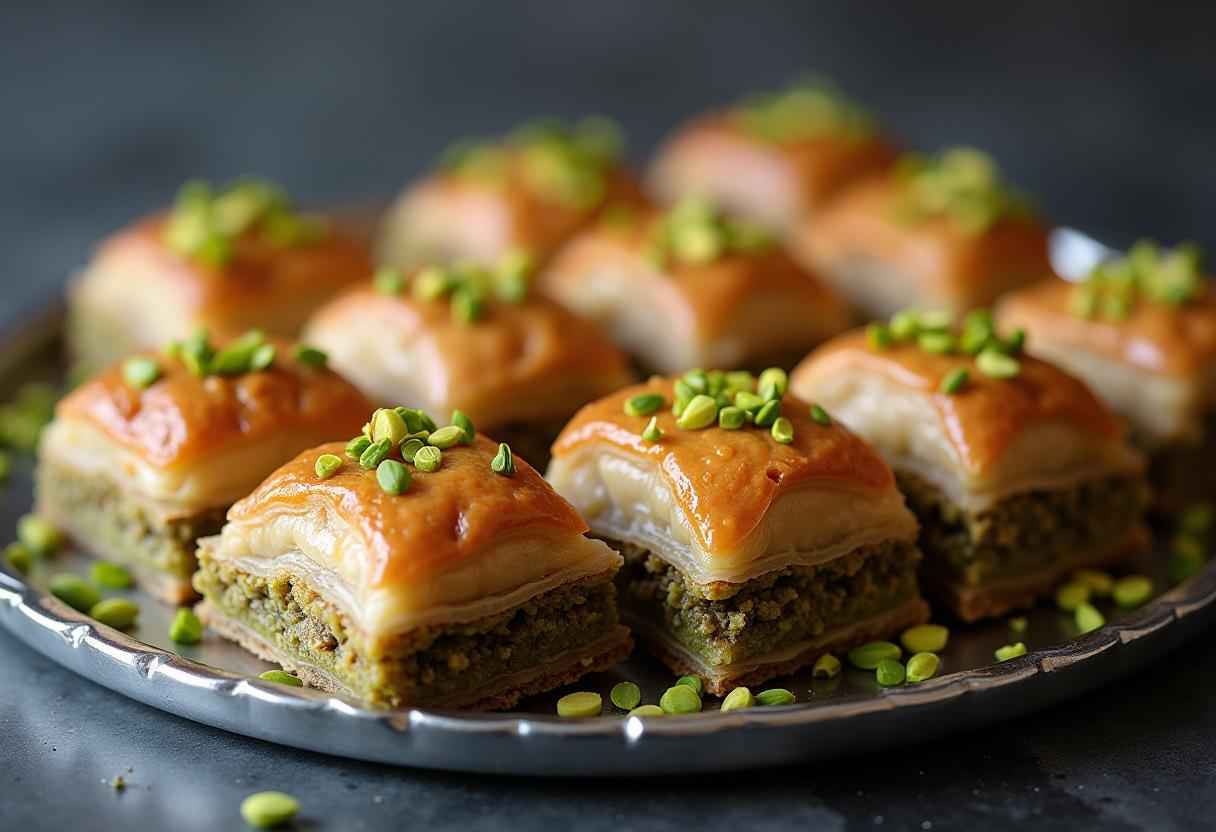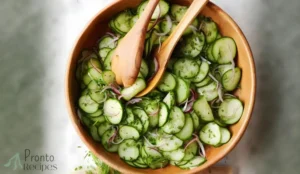Iranian desserts are a beautiful blend of cultural heritage, fine ingredients, and intricate preparation. Whether you’re looking to indulge in traditional sweets or try your hand at making them at home, Persian desserts offer a world of rich flavors, textures, and aromas. In this guide, we’ll walk you through how to make traditional Iranian desserts, share easy Persian sweet recipes, and explore essential ingredients that make these desserts stand out.
Table of Contents
- Ingredients for Traditional Iranian Desserts
- Popular Traditional Iranian Desserts You Must Try
- Step-by-Step Recipe for an Easy Iranian Dessert
- Tips for Authentic Persian Dessert Making
- Enjoying Persian Desserts with Your Family and Friends
- Conclusion: Savoring the Flavors of Iran at Home
Ingredients for Traditional Iranian Desserts
Before diving into the recipes, it’s important to familiarize yourself with the essential ingredients used in traditional Iranian desserts. Many of these ingredients contribute to the distinctive and aromatic flavors of Persian sweets. Let’s take a look at some of the most commonly used items in Iranian dessert recipes.
| Ingredient | Description | Used In |
|---|---|---|
| Saffron | A fragrant, golden spice with a unique earthy flavor. | Faloodeh, Saffron ice cream, Baklava |
| Rose Water | A distilled water with a floral aroma that enhances sweetness. | Saffron ice cream, Persian cookies |
| Pistachios | A green nut with a mildly sweet flavor and rich texture. | Baklava, Persian sweets and pastries |
| Almonds | Ground or whole almonds add a nutty crunch. | Persian cookies, Baklava |
| Honey & Sugar | Sweeteners commonly used in Persian desserts. | Faloodeh, Baklava, Shirini Keshmeshi |
These ingredients are the backbone of most Iranian desserts. They help create the unique taste profile that defines Persian sweets, blending sweetness with floral notes, nutty flavors, and fragrant spices.
Popular Traditional Iranian Desserts You Must Try
When it comes to Iranian desserts, there is no shortage of variety. From flaky pastries to creamy ice creams, Persian sweets are loved worldwide. Below are some of the most popular traditional Iranian desserts that you must try.
Faloodeh: A Refreshing Persian Frozen Dessert
Faloodeh is a classic Iranian dessert that combines thin vermicelli noodles, rose water, sugar, and ice. This dessert is often served chilled, making it the perfect treat during hot weather. It’s a refreshing, slightly chewy, and sweet dessert that has a delicate floral flavor.
Baklava: Layers of Sweet Perfection
Baklava is a well-known dessert, but Persian-style baklava takes it to another level with its flaky layers of filo dough, nuts (typically pistachios and almonds), and sweet syrup. The rich, crunchy texture of the baklava, combined with the sweetness of the syrup, makes it an irresistible treat.
Shirini Keshmeshi: Raisin Cookies with a Persian Twist
Shirini Keshmeshi are soft, fragrant cookies that feature a blend of raisins, flour, sugar, and cardamom. These cookies are often served during special occasions and are perfect with a cup of tea. The raisins add a slight sweetness, and the cardamom provides a unique, aromatic touch.
Zoolbia: Syrup-Soaked Persian Pastries
Zoolbia are deep-fried pastries soaked in syrup, making them crispy on the outside and tender on the inside. These delicious treats are often enjoyed during Persian holidays like Ramadan. They’re an ideal dessert for anyone with a sweet tooth, as they deliver the perfect combination of crunch and sweetness.
Step-by-Step Recipe for an Easy Iranian Dessert
Now that you’re familiar with some of the most popular Iranian desserts, let’s dive into a few simple recipes that you can try at home.
How to Make Faloodeh at Home (Time: 20 minutes)
Ingredients:
- 1 cup rice noodles or thin vermicelli
- 2 cups water
- ½ cup sugar
- 2 tablespoons rose water
- Crushed ice
Instructions:
- Follow the cooking directions on the package for the rice noodles.
- In a saucepan, bring 2 cups of water to a boil and dissolve the sugar.
- Once the sugar is dissolved, remove the syrup from heat and stir in the rose water.
- Pour the syrup over the cooked noodles and refrigerate for about 2 hours.
- Serve chilled with crushed ice.
Calories per Serving: Approximately 150 calories per serving.
How to Make Persian Baklava (Time: 1 hour)
Ingredients:
- 1 package of filo dough
- 1 cup pistachios, finely chopped
- 1 cup almonds, finely chopped
- 1 cup butter, melted
- 1 cup sugar
- 1 cup water
- 1 teaspoon lemon juice
- 1 teaspoon rose water
Instructions:
- Preheat the oven to 350°F (175°C).
- Brush a baking pan with melted butter, and layer 6 sheets of filo dough, brushing each sheet with butter.
- Add a layer of chopped pistachios and almonds, then cover with another 6 sheets of filo dough.
- Repeat the layering process until all the dough and nuts are used.
- Cut the baklava into diamond shapes and bake for about 45 minutes, or until golden brown.
- In a saucepan, combine sugar, water, lemon juice, and rose water, and bring to a boil. Simmer for 10 minutes.
- Pour the hot syrup over the baked baklava and let it absorb for at least an hour.
Calories per Serving: Approximately 250-300 calories per piece.
How to Make Shirini Keshmeshi (Time: 30 minutes)
Ingredients:
- 1 cup flour
- ½ cup butter, softened
- 1 cup powdered sugar
- 1 egg
- 1 teaspoon ground cardamom
- ½ cup raisins
Instructions:
- Preheat the oven to 350°F (175°C).
- In a bowl, combine butter and powdered sugar until smooth.
- Add the egg and ground cardamom and mix well.
- Gradually add flour until the dough comes together.
- Fold in the raisins and roll the dough into small balls.
- Place the dough balls on a baking sheet and bake for 15-20 minutes, or until golden brown.
Calories per Serving: Approximately 120 calories per cookie.
Tips for Authentic Persian Dessert Making
Making authentic Persian desserts requires attention to detail and a good understanding of the traditional techniques. Here are some useful tips to help you make the perfect Iranian sweets.
1. Using Fresh Ingredients
Fresh ingredients are key to achieving the best flavors in Persian desserts. Use high-quality saffron, rose water, and fresh nuts whenever possible. The quality of your ingredients will directly affect the taste and fragrance of your sweets.
2. Mastering the Techniques
Traditional Iranian desserts often require precise techniques, such as layering filo dough for baklava or achieving the perfect texture for faloodeh. If you’re new to making Persian desserts, take your time and practice. Follow each recipe step-by-step to ensure the best results.
3. Balancing Flavors
Persian desserts are known for their delicate balance of flavors. When making sweets like baklava or faloodeh, it’s important not to overdo it with the sweetness. The floral notes from rose water and saffron should complement the sweetness, not overpower it.
4. Customizing for Dietary Needs
Many Iranian desserts can be adapted for dietary restrictions. For example, you can use almond flour for gluten-free versions of cookies or substitute honey for sugar to create healthier alternatives. Don’t hesitate to make changes to suit your needs while maintaining the essence of the dessert.
Enjoying Persian Desserts with Your Family and Friends
Iranian desserts are often enjoyed during gatherings, holidays, and special occasions. Here are some ideas for serving your homemade sweets and enjoying them with loved ones.
Serving Suggestions
Serve Persian desserts with a cup of traditional Iranian tea, such as chai or saffron tea. The warmth of the tea complements the sweetness of the desserts and creates an authentic dining experience.
Pairing Iranian Desserts with Drinks
For a more indulgent treat, pair Persian baklava with a glass of rose or pistachio-flavored iced tea. For lighter desserts like faloodeh, a cold, refreshing beverage works best.
Cultural Importance of Sharing Desserts
In Persian culture, sharing desserts is a way of showing hospitality and bonding with others. Whether you’re celebrating a holiday or simply enjoying an afternoon snack, Persian desserts bring people together.
Conclusion: Savoring the Flavors of Iran at Home
Making traditional Iranian desserts at home is a rewarding experience that allows you to explore the flavors and textures of Persian sweets. With the right ingredients, recipes, and techniques, you can recreate these delicious treats in your own kitchen. Whether you’re making faloodeh, baklava, or Shirini Keshmeshi, these easy Persian sweet recipes will transport you to the heart of Iranian cuisine.
Savor these delightful desserts, share them with friends and family, and enjoy the rich cultural heritage of Iran, one sweet bite at a time!





